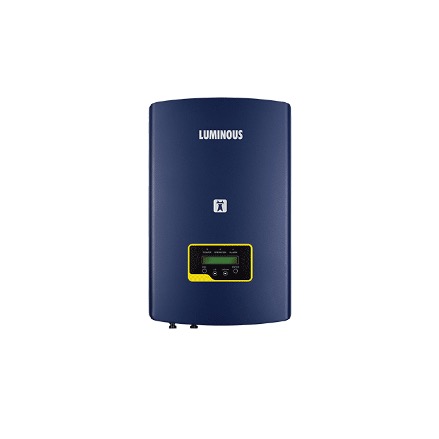Solar power systems come in many types. Which type a user chooses depends on their unique needs and budget. In the past few years, grid-tied systems are getting quite popular as they are proving to be a very cost-efficient way of generating electric energy.
In this article, we are going to understand the basics of grid-tied solar systems. Starting from understanding what a grid-tied system is, we will also discuss how it uses on grid solar inverter to efficiently power your home appliances.

What is a Grid-tied Solar System?
A grid-tied system or on-grid solar system is a type of solar power setup that is directly connected to the main electricity grid. Notably, a grid-tied solar system works without the use of any power backup equipment, although an on grid solar inverter is needed in the setup.
The grid-tied solar system is also known by other names such as on-grid solar system, grid-connected solar system, grid-inter tied solar system, and grid-direct solar system.
Homes with on-grid solar systems get electricity that is generated directly from sunlight. Excess electric power is transferred to the utility grid for storage. The household can also import electricity from the grid in the case when its needs are not completely met by solar power.
What Makes a Grid-tied Solar System Different?
A grid-tied solar system is different from any other solar system in the following ways:
- On grid solar inverter
As we mentioned above, a grid-tied solar system requires on grid solar inverter in place to work. The key function of an on grid solar inverter is to intelligently manage the solar panels. With its help, the power coming from solar panels is first sent to the household instead of being sent directly to the grid.
- No battery needed
Apart from the use of an on grid solar inverter, what makes a grid-tied solar inverter different is the fact that it does not require a battery. Since it does not include any form of energy storage, this system is relatively simpler to install and costs lower than other solar systems.
- Management of Power Shortfalls and Surpluses
Generally, the solar power generated during the daytime exceeds energy usage. An on grid solar inverter first supplies power to the household. Once the power is used, the excess power is exported to the utility. The excess supply is credited to the individual user that supplied the power.
A grid-tied system uses on grid solar inverter only for managing the electric power generated from solar panels. It does not include a battery to store energy for later use during power shortfalls.
Benefits of Using a Grid-Tied Solar System
The following benefits of grid-tied solar systems make them a popular choice:
- It is easy to maintain on grid solar inverters than to maintain other types of inverters.
- Grid-tied solar systems and inverters are optimized to produce as much solar energy as possible. During the summer season, some households with grid-tied solar systems even produce more solar energy than they consume.
- Most on grid solar inverters come with anti-islanding protection, which means that they turn off the power supply to the household the moment electricity goes off from the main electric grid.
Conclusion: The Best Option for Most
The main benefit of a grid-tied solar system that makes it a popular choice over other solar systems is that it proves to be more economical over a long period of time. Its upfront cost is lower, which means that it can provide a high return on investment (ROI) to the user.
If you are thinking of assimilating solar energy into your household power usage, you should definitely consider installing grid-tied systems. Check brands like Luminous India to find suitable solutions for your home.





